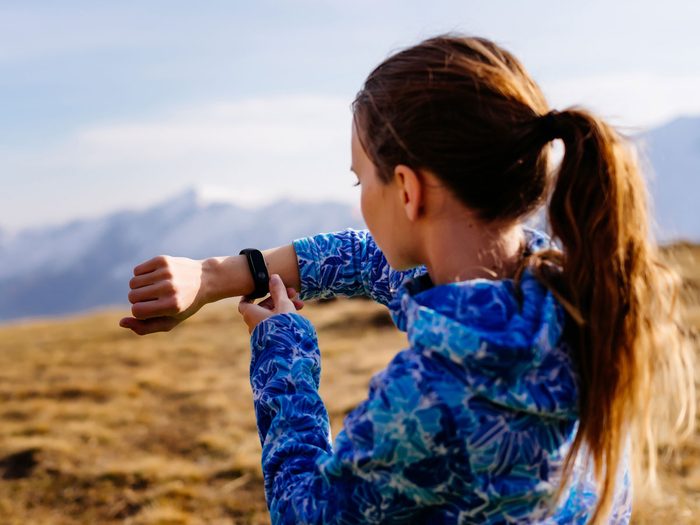
Input personal biometrics and keep them up to date
During the initial set-up phase of your fitness tracker, you’ll likely be prompted to input details about your gender, height, weight, physical activity goals, and more. That way, your wearable can tailor your calorie burn estimate with your body as a blueprint.
“The ability to personalize—so it’s tracking YOU and not a generic average human that’s not you—is one of the big benefits,” says Caley Crawford, a NASM-certified personal trainer and the director of education and programming at Row House in Irvine, California.
Don’t forget to adjust accordingly as you get stronger and fitter, suggests Jessica Cifelli, master instructor for CycleBar in Wyckoff, New Jersey. “Over time, success in our workout goals often means a change in body composition,” Cifelli says. “To keep your goals accurate, keep your information updated. This will keep your progress moving forward,” as you can tailor your new target to your current body measurements.
(Want to exercise at home more? These are the workout moves you can do with everyday objects you have at home.)
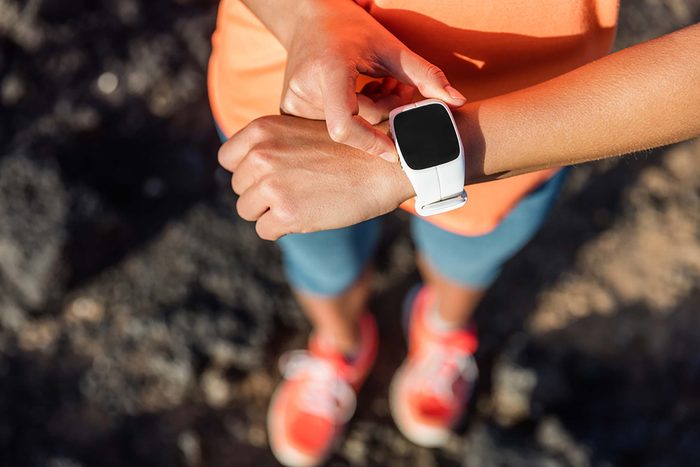
Track fitness goals during your workout
It’s not just about what you do during formal workouts. Each and every step counts on your trek to your fitness goals. “Moving periodically throughout the day can make a major difference over time as you burn the extra calories. Taking a short walk during lunchtime or a quick walking lap around the office can help you stay mentally focused for work and allow you to make sure you’re hitting your step goal,” says Lee Wratislaw, a NASM-certified personal trainer and the manager of digital programming for the GOLD’S AMP digital coaching app. “Get into the habit of wearing your fitness tracker everyday so that it becomes a part of your routine. Only take the tracker off to recharge it and then put it back on immediately after it is finished charging.”
At the gym, use it to monitor your heart rate, especially during those hard pushes, Wratislaw recommends. “That way, you can see if you are really pushing yourself out of your comfort zone. It can also help you to become more aware of your body during your workouts, which will in turn help you to be more mentally focused during your sessions,” he says. At the end of the day, you can peek at your recap and adjust your goals for the next day, says Sabrena Jo, American Council on Exercise (ACE) director of science and research in Lawrence, Kansas.
All of this data can be beneficial in determining how to balance your calories for the day, according to Cifelli. “On days that I’m not specifically exercising, I want to make sure I am still getting in movement in other ways, so I track steps. On the days I’m moving a ton, the calorie function is essential to make sure I am replenishing enough,” she says.
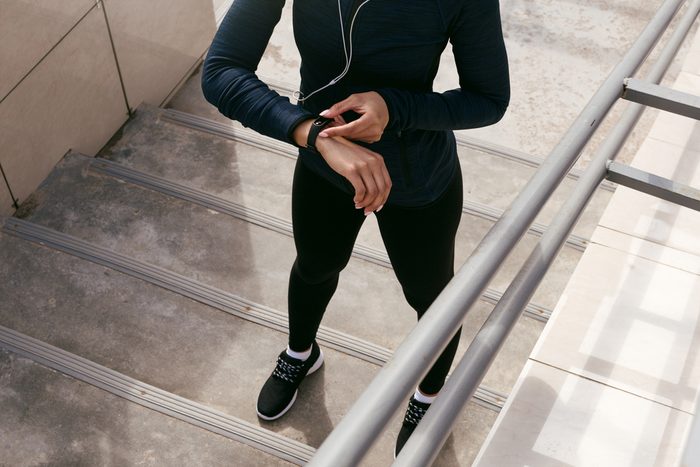
Set reminders to incorporate more activity
On those days you’re not moving a ton, “set your fitness tracker to ping to remind you to fit in some type of physical activity each hour,” Jo says. Cifelli sets her FitBit up to buzz at 10 minutes before the hour. It then reflects her total steps left needed to hit during that hour to reach her daily goal as a little nudge to stand up and step up her pedometer count.
Even when it’s not sending alerts, the visual reminder of the tracker can help keep you motivated and excited to exercise. “Let your tracker serve as a reminder of your fitness goals. It can be a useful mental tool to be able to feel the device on your wrist and remember that every step, every workout and every calorie counts. This tactile reminder will help you take your fitness to the next level,” Wratislaw says.
All of this positive reinforcement can be especially beneficial for fitness newbies, says Debra Strougo, co-founder of Row House and ACE-certified trainer in New York City.

Sign up for challenges to boost motivation
Download an app that works on your watch, and sign up with those that resonate with your physical activity preferences and abilities, Jo says. Step challenges, fitness “bets,” and non-profit benefits can all spark you to sweat. “Daily and weekly challenges, along with forum and discussion groups, allow for interaction within fitness communities, which can support healthy behaviour change,” Jo says. Or join a studio that connects to your tech.
“At Row House, a wearable fitness tracker offers an added benefit,” Crawford says. “My heart rate chest strap connects to our rowing machines so I can see my rowing stats in real time, as well as my heart rate in real time on my monitor. After class, I get an email that summarizes my heart rate activity as well as the work done on the rower, including meters rowed, best split time, average split, and more. I enjoy linking what I’m feeling in class with the real time validation afterwards. In a way, the stats say, ‘Yes, you did work as hard as you felt.'”
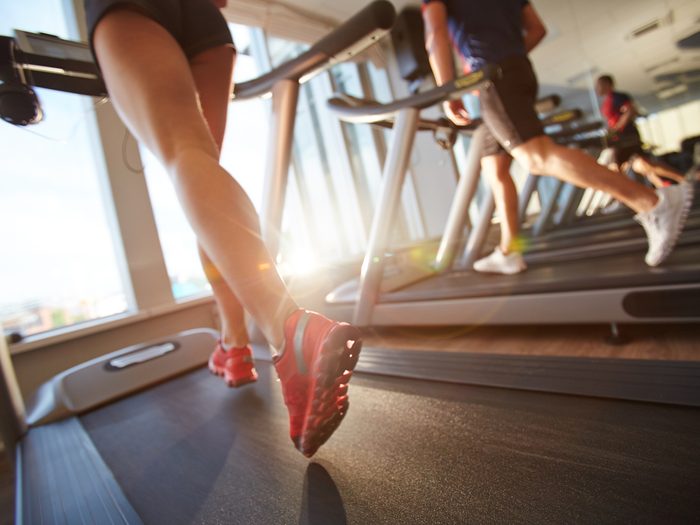
Challenge a fitness buddy
For even more get-up-and-go, pick a pal you know already (rather than strangers enlisted in a challenge) and suggest a sweat bet. “Many fitness trackers and apps have a social aspect that allows you to connect with friends. Getting involved in a community will help keep you motivated,” Crawford says, especially if it’s someone you see in real life as well. Cifelli echoes that sentiment: “Keep the friendly competition up and you’ll be less inclined to sit around!”
As you take on challenges—either by yourself, with a buddy, or in a group—don’t be shy about sharing your experience on social media. Who knows who you might inspire by being open about your successes and struggles?
“The best fitness trackers allow you to share the information with a group to help with accountability, but also give you access on the actual device to do what you need, such as set an alarm with ease,” Strougo says.
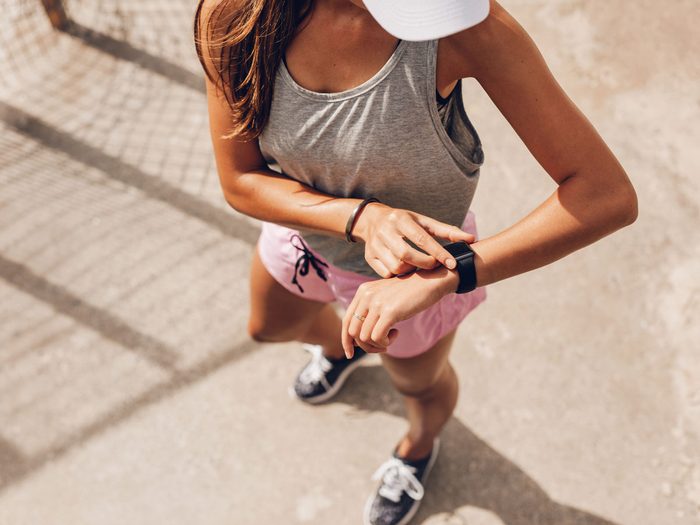
Monitor progress over time
It can be really gratifying to see a steady uptick in efficiency and steps after a few weeks or months. Has your heart rate decreased during the same activity? Has your pedometer tally stepped up?
“Set long-term realistic goals and be patient as you progress,” Wratislaw says. “Don’t give up and stop using your tracker after two or three weeks because you feel like you aren’t making progress. Step back and look at the big picture while appreciating your progress on a greater scale. It can be difficult to see the progress you are making on a daily basis, but evaluating your success on a monthly or quarterly basis will give you a better picture of the long-term gains you are making.” Plus, here’s how to perfect your form during at-home workouts.

Track sleep and nudge moments of R&R
Most fitness trackers include a feature that tracks sleep via an accelerometer that can track light and deep, restorative sleep periods based on your movement patterns. “Proper sleep is an often overlooked aspect of a healthy lifestyle for people who prioritize everything else before rest,” Wratislaw says.
Your fitness tracker can inspire you to chill out during waking hours as well. “I love relying on my tracker for the basics, like time, alarms, and notifications—especially the ‘breathe’ notification,” Strougo says. “We all need to take deep breaths and often forget!”
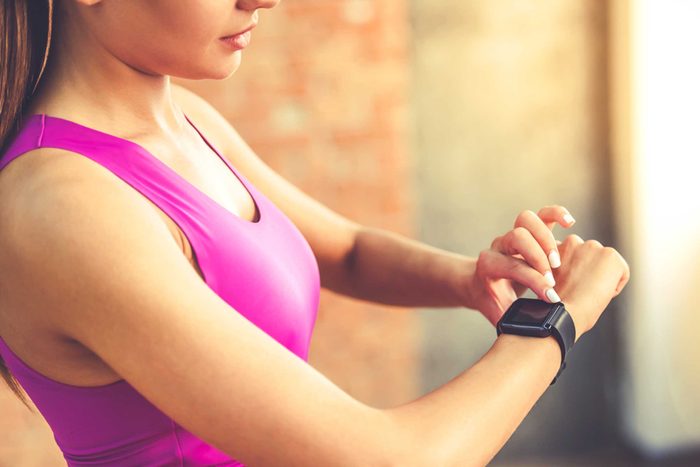
Don’t let it run your life
“Fitness trackers can be helpful tools to keep you centered and on pace to reach your fitness goals, but remember that your mental drive and focus is the ultimate key to achieving fitness success. Don’t skip a workout just because you left your tracker at home or forgot to charge it, or whatever the case may be. You’ll be glad you stayed committed when you ‘reconnect’ with your device,” Wratislaw says.
That’s why Strougo sticks with the basics with her fitness tracker and silences the rest. “It can be overwhelming to have your fitness tracker also ring when you get a call, ding when you get a text and have an alarm go off for every email. People are sometimes not aware of that option, and when there are so many notifications, they start to dismiss the ones that are related to movement,” she says. “The notification to move when I’m seated longer than 30 minutes or breathe deeply every hour as a [mediation] reminder should not be ignored, but a robot call during a run can be!”
Cifelli always makes sure to silence both email and text notifications during any of her dedicated workouts. “These devices can help you reconnect with your body; so while you are moving, it’s okay to disconnect from everything (and everyone) else!”
Next, learn some other ways to sneak meditation into your everyday life.
